Your Favorite?
Which of today’s two featured images do you like best? Leave a comment to let us know your choice and why you made it.
What’s Up?
As Jim drove away from Stick Marsh last Wednesday — we were headed back to ILE, I was overcome with a feeling of euphoria. I had discovered a truly spectacular Roseate Spoonbill photography paradise just 75 minutes from my home. And I am alive and healthy at a time when the current cameras can do things speed-, quality-, and autofocus-wise that we could only have dreamed of just a few years ago. With the SONY a1 and the a9 ii, and the Canon R5 & the EOS-1DX iii, science-fiction-like AF has become a reality. How lucky we all are.
When I peeked out the door at 7:30am on Saturday morning it was totally foggy, but I headed down to the lake anyhoo. (As regular readers know, anyhoo is a tribute to my late-Dad.) The sun broke through early. I did some fog-scapes to start off and followed those up with a pair of Black Vultures. I went to see if the Yellow Canna were blooming yet. They were not, but I did see the single surviving crane colt in the South Marsh looking fine and healthy. Next, I did some tickseed blossoms with the Alpha a1, the Metabones adapter, and the Canon 180mm macro lens. I worked a handsome adult Sandhill for a bit and ended by trying (and failing) for some Wild Turkey flight shots.
I sent out an important Sony Alpha a1 Info & Updates e-mail to the group. Next was Stick Marsh Site Guide e-Mail #2: the Late March Update. Then I began working on my Zoom Webinar presentation that I will be doing for the South Shore Camera Club on April 7th: Designing and creating pleasing and dramatic natural history images.
I went back down to the lake right before sunset. With a good breeze from the east, it looked promising but turned out to be a big grey fizzle.
Today is Sunday 28 March 2021. The morning forecast for ILE is for partly cloudy with a freshening wind from the south/southeast. I will be headed down to the lake for a look-see. Wherever you are and whatever you are doing, I hope that you have a great day.
This blog post took almost two hours to prepare and makes ninety-six days in a row with a new one. Please remember to use my B&H affiliate links or to save money at Bedfords by using the BIRDSASART discount code at checkout. Doing either often earns you free guides or discounts. And doing so often earns my great appreciation.
Kudos to Blog Regular Bob Eastman
Bob Eastman/March 26, 2021 at 11:45 am
In the Five Million to One Shot Comes Home. Or not? blog post here, I asked folks to try to figure out what bugged me. Bob Eastman nailed my thoughts to a tee with the comment below.
Howdy Artie
So beautiful the images from the stick marsh and everyone you have taken there as others must be overjoyed! By the sounds of reading the post, there must be a lot of photographers where you are if hearing all the shutters going off.
My thought on the image first is really cool out of the box with no head showing off the backside, really cool.As far as your bug, i believe it is the left wingtip — the shadows as it is curled down and had it been curled up you would not have that. There is also a touch on the right side wing tip! That is what bugs me and perhaps you as well? However, the left side stands out more!
Always with love, b
|
|
|
This image was created on 26 March 2021 at Stick Marsh during an In-the-Field Instructional session with BPN/Brian Sump-friend Vaughn Larsen. I used the hand held (gasp!) Sony FE 600mm f/4 GM OSS lens with the Sony FE 1.4x Teleconverter and The One, the Sony Alpha 1 Mirrorless digital camera. ISO 800. Exposure determined via Zebras with ISO on the rear dial: 1/1000 sec. at f/8 (stopped down one stop) in Manual mode. AWB at 8:30am on a clear morning with some moisture in the air. Wide/AF-C was active at the moment of exposure and performed perfectly. Image #1: Roseate Spoonbill with stick |
Hand Holding at 840mm
When I tried the 600 GM with the 1.4X TC on the lowered tripod, I found that it was difficult at best to grab the 200-600 for the incoming flights shots as the big lens on the tripod in right in front of me. It was very difficult for me to get the lens on the birds that usually fly in from right to left and pan smoothly. So the next day, I laid the 840mm rig in the grass next to me and grabbed it for head and stick portraits. Thus, I wound up working with two cameras, the a1 on one lens and an a9 ii on the other. I was astounded that the a9 ii seemed like a dinosaur as compared to the a1. It was slower to acquire focus and the frame rate seemed downright pedantic. Talk about spoiled.
I did, of course, use the knee-pod technique when attempting the hand held head portraits.
Depth-of-Field Question
Why did I stop down to f/8 for Image #1 but choose to work at the wide open aperture for Image #2? Hint: there is a perfect 3-word answer!
|
|
Image #1A: Active AF points for the Roseate Spoonbill with stick image |
A Rare Square
I rarely go with boxy or perfect square crops. By considering the full frame original image above, the reasons why I went with a true square crop become obvious. Having cut off the legs right at the knees (by focal-length-neccesity), I knew that I had to eliminate those with a crop. And by choosing a square crop I was able to include some of the carmine epaulets. If you think there was a better option, please leave a comment.
Sony Alpha a1 AF Magic …
The AF system of the a1 — set up as detailed in e-mails to the Sony Alpha a1 Info & Updates group, continues to amaze me. Early on there was lots of discussion within the group with many preferring multiple back button approaches. For me a simple shutter button approach with the right AF settings that yield 99% sharp on the eye images is best. By far. Super-simple and mega-effective. Note: info on the program that I use to ascertain SONY AF point information is detailed in one of the SONY Alpha a1 Set-up and Info Group e-mails. I plan on making that information available here soon for all SONY camera users.
SONY Alpha a1 Set-up and Info Group
The SONY Alpha a1 Set-up and Info Group is going great guns as folks chime in with thoughtful questions and experience-based advice. We are now up to 19 folks. Early on (as noted above) we discussed the best AF options. More recently, we have been in contact with folks at SONY sharing our thoughts, experiences, and frustrations with the EVF blackout problem. There will be more on that topic here tomorrow.
All who purchased their Alpha a1 bodies via a BAA affiliate link will receive a free subscription to the Sony Alpha a1 Set-Up and Info Updates after shooting me their receipts via e-mail. This same service may be purchased by anyone with an a1 body via a $150.00 Paypal sent to birdsasart@verizon.net indicating payment for Alpha a1 Info Updates. Alternatively, they can call Jim weekday afternoons at 1-863-692-0906 to pay via credit card. New members will receive composite e-mails that summarize all previous discussions.
|
|
|
This image was also created on 26 March 2021 at Stick Marsh during an In-the-Field Instructional session with BPN/Brian Sump-friend Vaughn Larsen.For this one I used the Induro GIT 404L/Levered-clamp FlexShooter Pro-mounted Sony FE 600mm f/4 GM OSS lens with the Sony FE 1.4x Teleconverter and The One, the Sony Alpha 1 Mirrorless digital camera. ISO 640. Exposure determined via Zebras with ISO on the rear dial: 1/3200 sec. at f/5.6 (wide open) in Manual mode. AWB at 8:43am on a clear morning with some moisture in the air. Wide/AF-C was active at the moment of exposure and performed perfectly. Click on the image to see a larger version. Image #2: Roseate Spoonbill incoming top-shot |
A Change of Pace
Having created dozens of superb images of incoming spoonbills with wings flared for landing with the 200-600 G, I decided to try some tripod-mounted 840mm flight to achieve a different look. By shooting down here, I was able to do that by way of a top-shot view with a lovely blue water background. In the Stick Marsh Site Guide Subscription Service, each e-mail includes several images. For each image I note the lens used and the exact location (via a coded map) where each was created. Going with a long focal length for the first time at Stick Marsh yielded lots of new-look images.
The Stick Marsh Site Guide e-Mails
You will receive a series of e-mails that contain everything that you need to know about Stick Marsh. The Basics e-mail includes specific directions to the site, and a map of the rookery area with specific instructions and wind, weather, and where-to-be advice. You will receive seven e-mails in all.
There are lots of photographers at Stick Marsh most days. Many are skilled at hand-holding 500 and 600mm f/4 telephotos lenses. But with all due respect, none of them can come anywhere near me when it comes to analyzing the photo opps at a given location. With the exception of a very nice and very helpful man I met, Fred Vaughn, every single photographer got to their favorite spot and never moved. We moved around a lot and had great and different chances all day long.
You can order your Stick Marsh Site Guides only by calling Jim in the office weekday afternoons (but not on Friday) at 863-692-0906 with your credit card in hand or send a PayPal for the $100.00 to us at
samandmayasgrandpa@att.net. Please be sure to include the words Stick Marsh with your Paypal.
I fully understand that you can go to Google Maps, try to find Stick Marsh, visit, and likely make some good or great images. You might think, I can do fine just without artie’s advice. But you will do a whole lot better with it.
|
|
|
All of the images were created at Fort DeSoto in April or early May. Click on the card to enjoy a larger version. Fort DeSotoIPT card A |
Fort DeSoto Spring IPT #1
Fort DeSoto Spring IPT #1. 3 1/2 DAYS. SAT 10 APR thru the morning session on TUES 13 APR 2021. $1499 includes three lunches. Limit: 6. Openings: 5.
While DeSoto is one of the rare photo hotspots with the potential to be great any day of the year, it absolutely shines in spring. Many of the wading birds and shorebirds are in full breeding plumage. The terns and gulls are courting and copulating. We will have lots of flight photography opportunities. Did I mention that many of the birds are silly tame?
A $499 deposit is required to hold your spot for this IPT. You can send a check (made out to “BIRDS AS ART) to us here: BIRDS AS ART, PO Box 7245, Indian Lake Estates, FL, 33855, or call Jim or Jennifer at the office with a credit card at 863-692-0906. Your balance, payable only by check, is due immediately after you sign up. If you have any questions, please feel free to contact me via e-mail. If you cancel due to COVID 19 concerns, all of your payments will be refunded.
|
|
|
All of the images were created at Fort DeSoto in April or early May. Click on the card to enjoy a larger version. Fort DeSoto IPT card B |
Fort DeSoto Spring IPT #2
Fort DeSoto Spring IPT #2. 3 1/2 DAYS. MON 26 APR thru the morning session on THURS 29 APR 2021. $1499 includes three lunches. Limit: 6. Openings: 5.
Not only am I conversant in all three major camera systems used in the US — Nikon, Canon, and SONY (sorry Andy Rouse …), I have used all three within the past four years. Those include both SONY and Canon mirrorless. On both of these IPTs you will learn how to get the best exposure, how to get the most out of your AF system, and how to get close to free and wild birds. And tons more.
A $499 deposit is required to hold your spot for this IPT. You can send a check (made out to “BIRDS AS ART) to us here: BIRDS AS ART, PO Box 7245, Indian Lake Estates, FL, 33855, or call Jim or Jennifer at the office with a credit card at 863-692-0906. Your balance, payable only by check, is due immediately after you sign up. If you have any questions, please feel free to contact me via e-mail. If you cancel due to COVID 19 concerns, all of your payments will be refunded.
|
|
|
All of the images were created at Fort DeSoto in April or early May. Click on the card to enjoy a larger version. Fort DeSoto IPT card C |
Fort DeSoto Spring IPTs Expected Species
With any luck, we should get to photograph the following species: Laughing, Ring-billed, Herring, and Lesser Black-backed Gull; Royal, Sandwich, and Forster’s Tern: Great, Snowy, and white and dark morph Reddish Egret and Great Blue, Little Blue, and Tricolored Heron; Yellow-crowned Night-Heron, Wood Stork, Roseate Spoonbill, and Brown Pelican. We will see and photograph lots of shorebirds including American Oystercatcher, Black-bellied, Wilson’s, Semipalmated, Snowy, and Piping Plover, Marbled Godwit, Willet, Dunlin, Red Knot, Sanderling, and Western and possibly White-rumped Sandpiper.
Sign up for both IPTs and enjoy a $200 discount. Most of us will be staying in nearby Gulfport.
Typos
With all blog posts, feel free to e-mail or to leave a comment regarding any typos or errors.

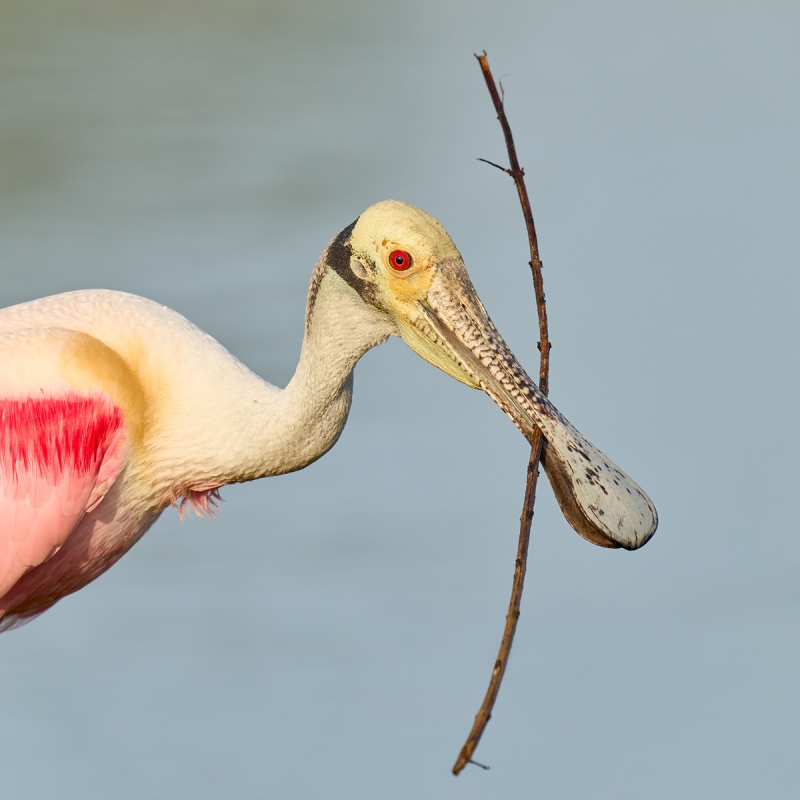
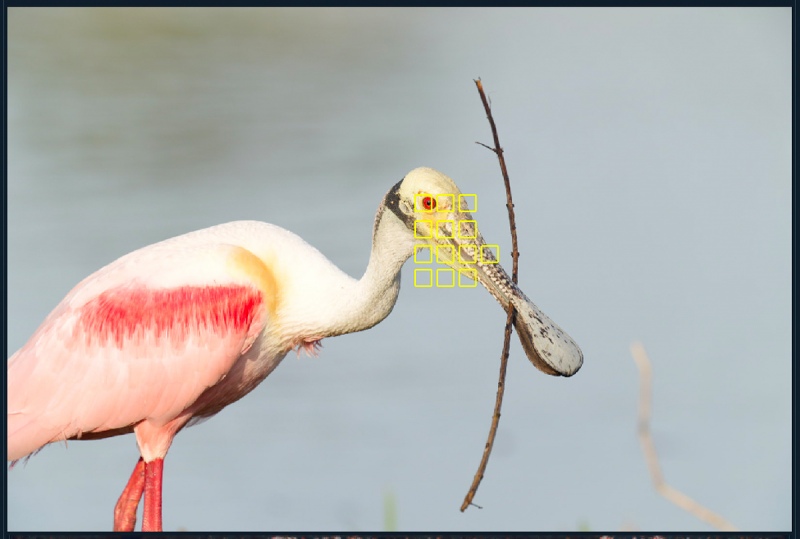
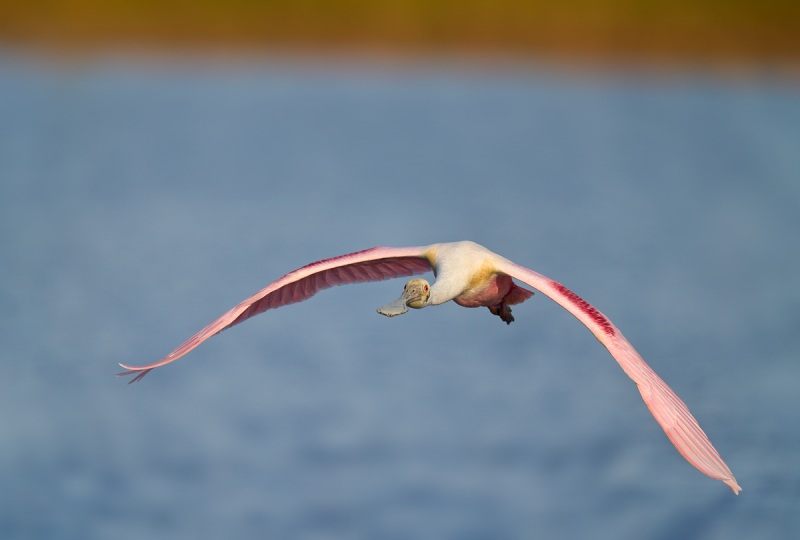
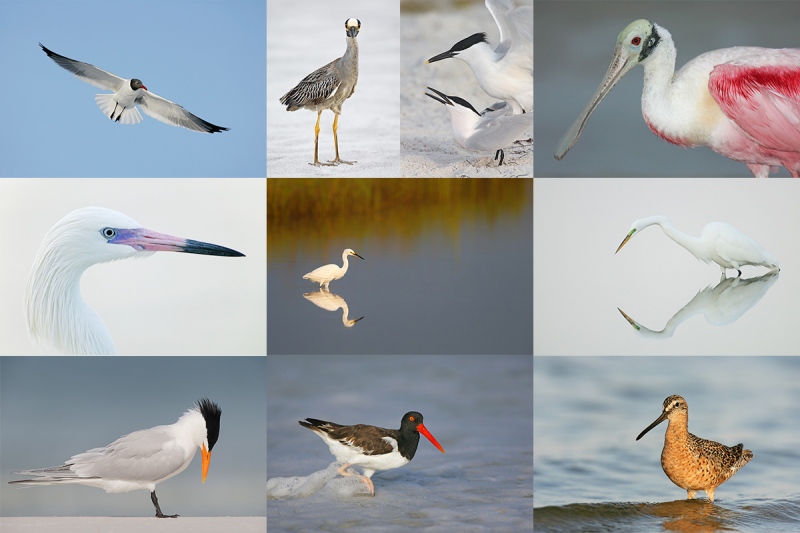
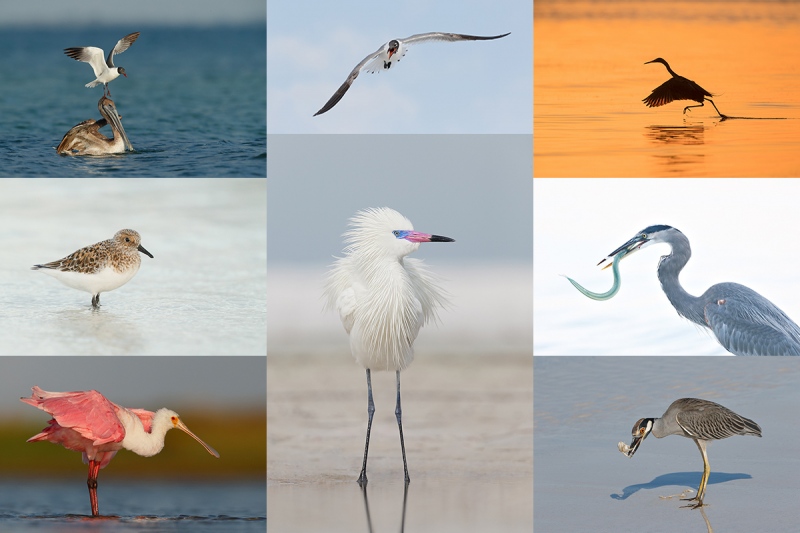
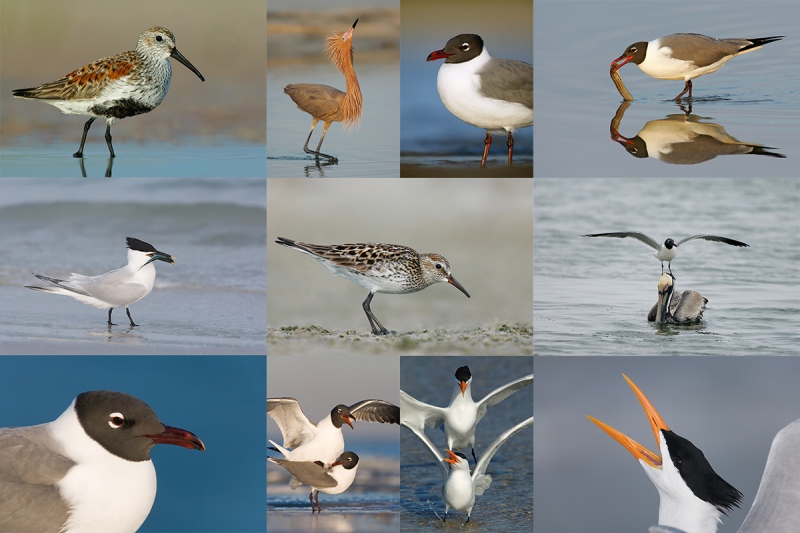













Hi Artie,
I too have had the blackout problems with my A1. I have spent a lot of effort getting one of the first ones and was hugely disapointed when it first happened. I have a fealing it might be due to the tilting screen kept in a tilted position. Even if minutely not secured in place due to sand particles etc, I think the camera thinks tha back screen is beeing used and blacks out the evf. This is just a theory though. Hope they resolve it if my theory is incorrect.
Hi Mehmet, EVF blackout is NOT due to anything having to do with the rear screen. Did you use my links to purchase your a1? If not, you might consider joining the SONY Alpha a1 Set-up and Info Group (as detailed in most recent blog posts). You will learn a ton about your expensive camera.
with love, artie
I really, really like the square crop for the up close view, the wing color and emphasis on the stick.
Hi Artie
For once I don’t like any of the Images it must be the angle you took them at and they our my
favourite water bird of Florida.
Best and love
Ken
Wow Artie — “A stick in my mouth”!!! Hahaha!!
Hi, Artie. Iike the square crop and I think I would have done it that way too. On the depth of field, I’d say “high shutter speed.” I like the first image better, it’s just somehow peaceful and pleasing. Great composition, head angles, color.
Artie: My favorite, hands down, is the square crop. I like the up-close look of the bird with the stick in it’s beak. My reason for turning down the flight shop was: (1) I prefer seeing more of the wings than this “skinny” wing image and (2) I don’t like the dark color at the top of the image — if it were my picture, I would have eliminated the dark color.
Different strokes. I love the gold strip at the top.
Love to you both,
a
Depth-of-Field Question
Why did I stop down to f/8 for Image #1 but choose to work at the wide open aperture for Image #2? Hint: there is a perfect 3-word answer!
I would say “Distance to Subject” I believe the head shot bird was closer, so you needed a smaller aperture to get the depth of field. With the bird in flight, I believe it was further away, so you had more depth of field. Also, being further away, the ratio of distance to bird and distance to background tends to make the background more in focus. So, a larger aperture helps blur the background in this image.
Also, I like the square crop. I love the detail being up close and personnal. But, I don’t think I would have ever thought to do a square crop! Live and Learn!